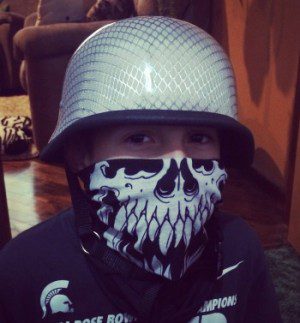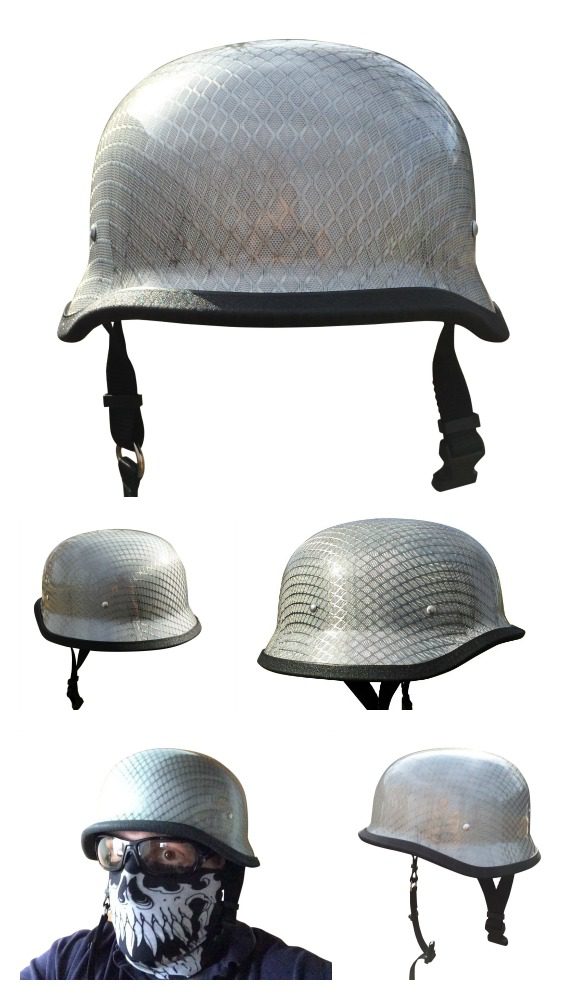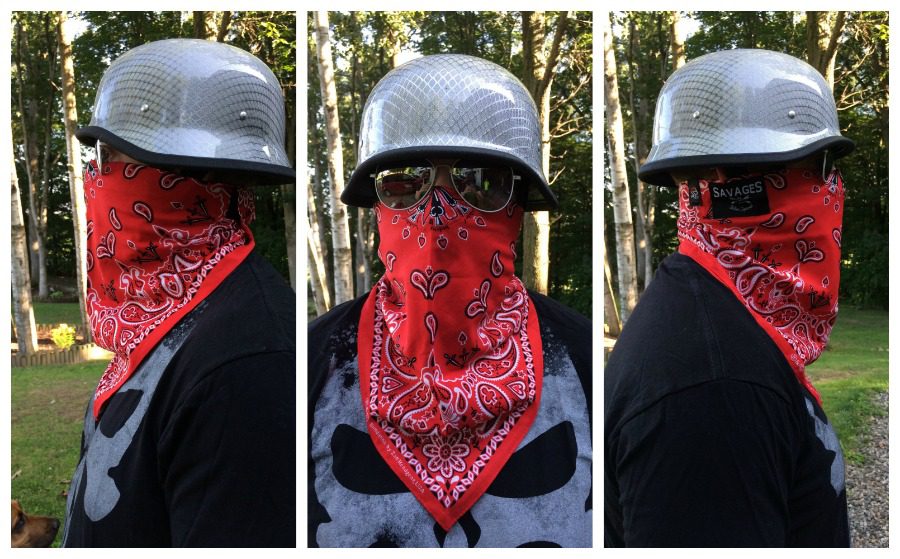The New German Carbon Fiber Helmet
 Motorcycle Helmet Made in the USA
Motorcycle Helmet Made in the USA
Every component and piece of this helmet is manufactured in the USA. From the unique blend of materials the helmet is made of to buckles and the straps – this helmet has USA all over it, making it one badass American Made Motorcycle Helmet.
More on that below…
Highest Strength Helmet -HSH-
Dare I say “On the Market!?
There I said it. This helmet can be ran over with a truck and not even flinch. It’s NOT DOT rated – It’s better. This helmet is made out of a unique blend of Carbon Fiber and Kevlar to protect you in the worst possible situations on the road. It can be ran over with a truck, and not even show a scratch. Yeah, a TRUCK.
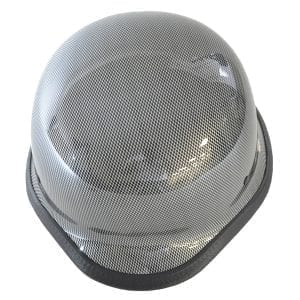
Ensolite Liner
What is this and what does it mean? It’s comfy, but it is not DOT rated. Which means that the impact rating is lower that a standard DOT helmet. This helmet will not give you that Mushroom head look that a DOT helmet will.
Performance Straps and Buckle
We like to ride fast, and we know that you do too. With our performance nylon straps and fast clipping buckle, taking your helmet on or off is easy and care-free. Everyone in the group will not be waiting on you to get your helmet strapped on to get on the open road.
 Chrome Mesh Weave Pattern
Chrome Mesh Weave Pattern
How much chrome can you put on your bike? Answer: all of it. But it does not stop there – go ahead and add some chrome to your helmet too, in a custom weave pattern the is design to stand out.
When is it available? How do I get one?
Go ahead and checkout the pricing and sizing details on this one here.
Ever take a long, close look at a helmet? If so, then you have likely noticed that, with the exception of some minor aesthetic variations, most of them look pretty much the same. A very good reason exists for that. It is because the means of constructing most helmets differs very little from one to another.
Here is the making of a standard helmet in a nutshell:
- Fill a female mold with gel-coat that is either is clear or colored and then
- Lay fibers into that mold,
- Apply resin and roll the subsequent material out in such a way as remove as possible. The mold’s part can either be heated for the purpose of accelerating the cure or it can be left alone to cure at room temperature.
And that is the simple and condensed version of how to make a helmet.
Of course, the practice is usually a bit more complicated than the theory. Even when it is not- it’s still not a bad way to make a helmet. It’s quick, it’s easy, it’s affordable. What it is not is the method for making the safest helmet. Making a helmet using gel, resin and standard curing procedures cannot provide the kind of structure integrity offered by high pressure laminate manufacturing.

Enter Get Lost Helmets 🙂

Fiber volume is what it’s all about.When you work with exacting and precise amounts of resin versus fiber, you gain greater control over the laminate structure and that ratio is known as fiber volume. What is the best fiber volume that a traditional wet lay-up hand laminated helmets can achieve? Fifty percent fiber versus fifty percent resin. The key figure of 50% fiber volume is all about keeping the resin content to a minimum in order for the stronger fiber to become the muscle of the operation and by comparison the non-pressure laminate simply falls short.
It is worth pointing out that the process of manufacturing this stronger type of carbon fiber helmet is not significantly different from manufacturing the non-pressure laminate. A female mold must still be sprayed with a gel coat and multiple layers of fiber are placed into the mold. It is at this point that things take a turn. Pressure is applied at 74psi inside the mold and then the just the right amount of resin is injected before the helmet is heated for curing. This process results in a fiber volume ratio of 40% resin to 60% fiber. Since the resin is essentially there solely for the purpose of keeping the fibers in place and actually do little to offer strength or protection, it becomes clear that the structural integrity of this laminate is superior to the non-pressure manufacturing method.
Carbon fiber helmets are constructed through superheating an acrylic fiber in order to yield higher ratios of stiffness and strength to weight. When this process is done correctly – carbon fiber composites and produces a significant reduction in the weight of the helmet in comparison to a significant increase in strength.
Kevlar helmets are created by dissolving a polymer in solvent before extruding the fiber following by spinning. Kevlar shares some properties with carbon fiber, but lacks its compressive strength. The combination of 50% Carbon Fiber and 50% Kevlar can increase the strength of a Kevlar-only helmet threefold. A comparison of typical fiber properties of the materials used for constructing helmet are as follows:
[table id=55 /]Confused yet? Understandable, but in reality it is quite simple. The stiffness (42.3msi) of carbon fiber is a contributing factor to the strength of our carbon/Kevlar fiber helmet due to the strength and weight it provides as a result of its density (1.78g/cc). The addition of an energy-absorbing foam – called Ensoliteour – the liner of helmet provides a significant increase in protection that routine headliner material simply cannot match.
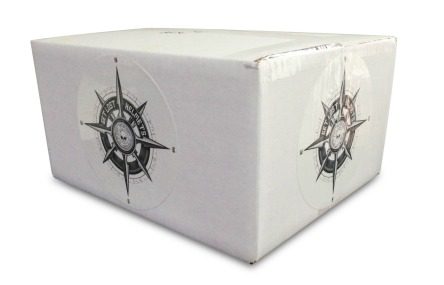
We build each of our helmets with the goal of protection and saving lives – not money.


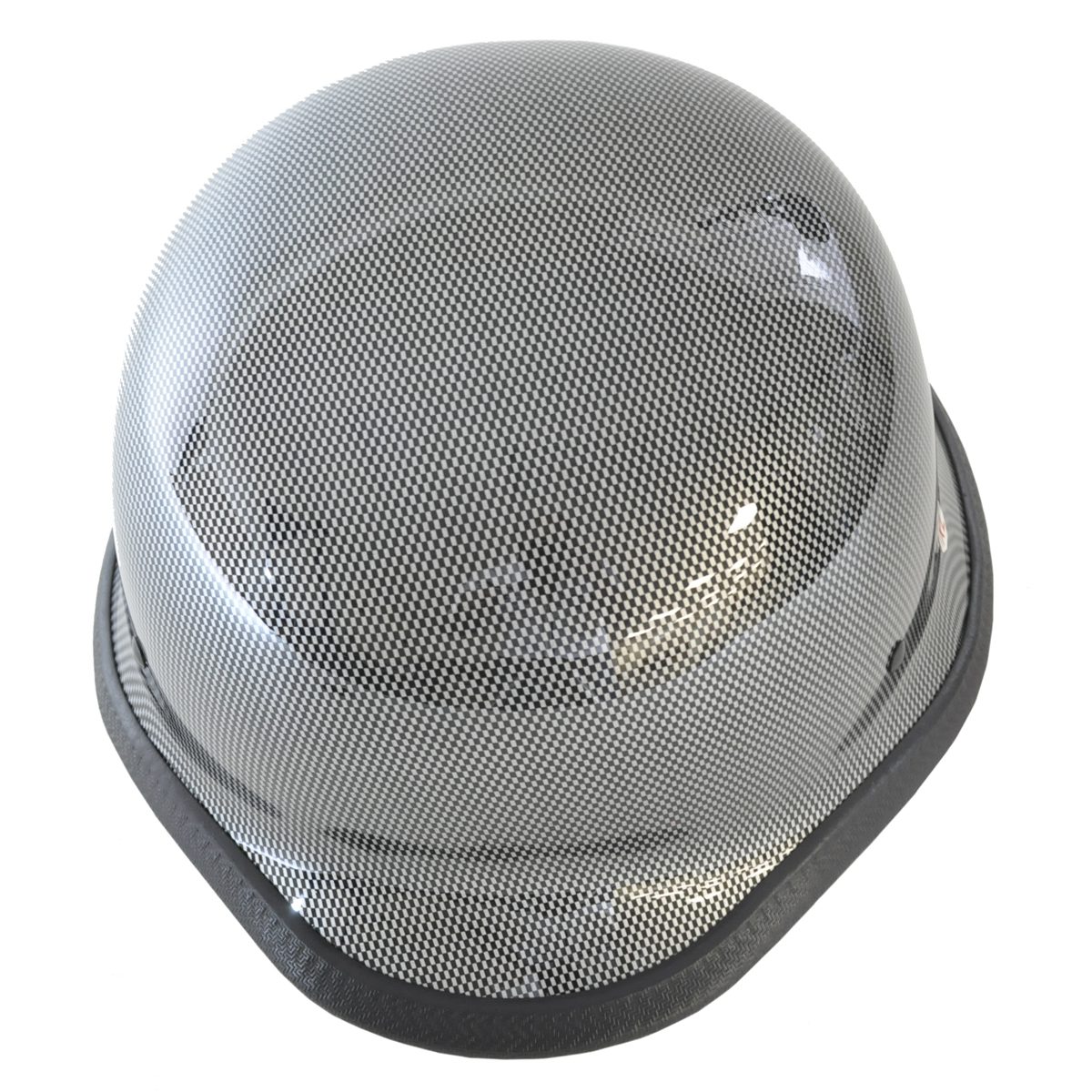
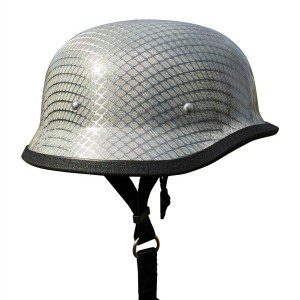 Motorcycle Helmet Made in the USA
Motorcycle Helmet Made in the USA 